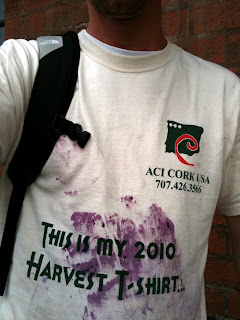Since I no longer work there, however, I think it's now safe to reveal the name: JC Cellars. If anyone was truly curious, it wouldn't have required much work to figure it out (especially since I've posted pictures that were dead giveaways, such as the ones uploaded on September 21st).
Why now? Why reveal the name a few weeks after my last day? Well, Robert Parker's Wine Advocate published its review of JC's 2008 wines and the results are absolutely spectacular. I just had to share:
Robert Parker Reviews JC Cellars' 2008 Vintage
It would be terrific news if one day the winemaker behind all these brilliant wines, Jeff Cohn, gets his own winery and vineyard. He certainly has a knack for putting together super wines, generally from Rhone Ranger varietals, but also Zinfandel.
95+ points - 2008 Buffalo Hill Rockpile Vineyard Syrah
94 points - 2008 Smoke & Mirrors
94 points - 2008 Twist of Fate Syrah
94 points - 2008 Eaglepoint Ranch Petite Sirah
93+ points - 2008 Rockpile Vineyard Syrah
93 points - 2008 Sweetwater Springs Zinfandel
93 points - 2008 Fess Parker's Vineyard Syrah
93 points - 2008 Misc. Stuff
92 points - 2008 The First Date
91 points - 2008 The Impostor
91 points - 2008 Stagecoach Vineyard Marsanne
90 points - 2008 Ventana Vineyards Grenache
As my wife pointed out, when a wine named Misc. Stuff scores a 93, you're doing pretty well.














































